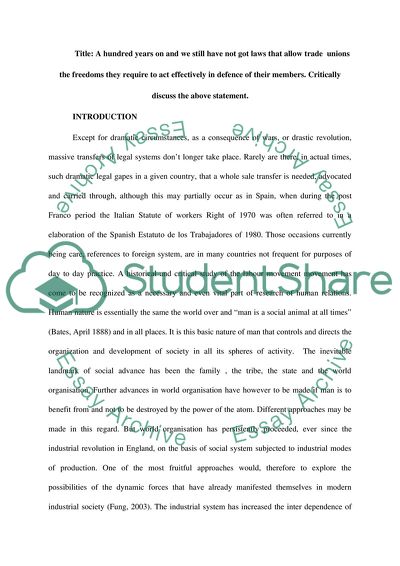Cite this document
(Employment Law and Trade Unions Essay Example | Topics and Well Written Essays - 5000 words, n.d.)
Employment Law and Trade Unions Essay Example | Topics and Well Written Essays - 5000 words. Retrieved from https://studentshare.org/law/1712974-employment-law-trade-unions-uk
Employment Law and Trade Unions Essay Example | Topics and Well Written Essays - 5000 words. Retrieved from https://studentshare.org/law/1712974-employment-law-trade-unions-uk
(Employment Law and Trade Unions Essay Example | Topics and Well Written Essays - 5000 Words)
Employment Law and Trade Unions Essay Example | Topics and Well Written Essays - 5000 Words. https://studentshare.org/law/1712974-employment-law-trade-unions-uk.
Employment Law and Trade Unions Essay Example | Topics and Well Written Essays - 5000 Words. https://studentshare.org/law/1712974-employment-law-trade-unions-uk.
“Employment Law and Trade Unions Essay Example | Topics and Well Written Essays - 5000 Words”, n.d. https://studentshare.org/law/1712974-employment-law-trade-unions-uk.


